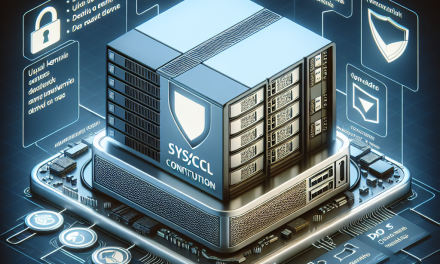In today’s digital age, ensuring the security of your Linux server is paramount. With cyber threats on the rise and data breaches becoming increasingly common, employing robust security measures is crucial. One effective strategy involves integrating a Content Delivery Network (CDN) with your Linux server. This article will explore various strategies for securing your Linux server while leveraging CDN functionality.
Understanding the Role of a CDN
A CDN is a network of servers distributed across various locations, designed to deliver content to users more efficiently and securely. By caching and storing copies of your content closer to users, a CDN can enhance performance and simultaneously reduce the load on your origin server. Furthermore, CDNs offer several security features, making them a valuable ally in your server’s security strategy.
Strategies for Securing Your Linux Server with CDN Integrations
1. Implement SSL/TLS Encryption
One of the fundamental security measures is implementing SSL/TLS encryption. CDNs typically provide SSL certificates for your domains, allowing encrypted data transmissions between users and your server. This is crucial for protecting sensitive information and enhancing user trust.
- Steps to Implement:
- Choose a CDN provider that offers SSL support.
- Generate a Certificate Signing Request (CSR) on your Linux server.
- Install the SSL certificate provided by the CDN.
2. Use a Web Application Firewall (WAF)
Integrating a Web Application Firewall (WAF) through your CDN adds an additional layer of security. The WAF sits between users and your application, filtering and monitoring HTTP requests.
- Benefits:
- Protects against common threats such as SQL injection and cross-site scripting (XSS).
- Provides real-time threat intelligence updates.
3. Restrict Access with Geo-Blocking
CDNs often allow you to configure geo-blocking settings, restricting access from certain geographical areas. This can be particularly useful if your business only operates in specific regions.
- How to Implement:
- Use the CDN’s dashboard to configure geo-blocking rules.
- Monitor the access logs to ensure legitimate users are not inadvertently blocked.
4. DDoS Protection
One of the most significant threats to any server is a Distributed Denial of Service (DDoS) attack. Most CDN providers offer DDoS protection services designed to absorb the traffic from such attacks.
- Strategies:
- Enable DDoS protection features within your CDN.
- Regularly review traffic patterns to identify anomalies.
5. Regular Software Updates and Patch Management
While CDNs can significantly enhance security, they do not replace the need for regular updates to your Linux server. Outdated software can expose vulnerabilities that attackers can exploit.
- Best Practices:
- Schedule regular updates for your operating system and applications.
- Use package managers (like apt or yum) to automate updates where possible.
6. Secure Remote Access
If you need remote access to your Linux server, using a VPN or SSH key-based authentication is crucial. Integrating a CDN can help mask the server’s IP address, adding another layer of obscurity.
- Tips:
- Disable root login via SSH.
- Use fail2ban or similar tools to limit failed login attempts.
7. Content Security Policy (CSP)
Implementing a Content Security Policy (CSP) can enhance your server’s defenses against XSS attacks. A CSP allows you to specify which content sources are trusted, helping to mitigate the risk of malicious content being executed.
- Implementation Steps:
- Configure the CSP in your server’s response headers.
- Test the policy thoroughly in different browsers.
8. Monitor and Review Logs
Consistently monitoring server logs for unusual activity is essential for proactive security management. Most CDN providers enable access logs, which can be invaluable.
- Monitoring Tools:
- Use tools like Logwatch or GoAccess for analytics.
- Correlate CDN logs with your server logs for comprehensive insights.
Conclusion
Integrating a CDN with your Linux server offers numerous benefits, both in terms of performance and security. When implementing these strategies, remember that a layered security approach—combining technological, procedural, and human factors—is the most effective way to safeguard your server. Regularly review your security practices, stay informed about new threats, and continually adapt your methods to the evolving landscape of cybersecurity.
By leveraging CDNs effectively, you can not only enhance the performance of your applications but also bolster your server’s defenses against an array of cyber threats. Start implementing these strategies today to ensure the safety and reliability of your Linux server.





